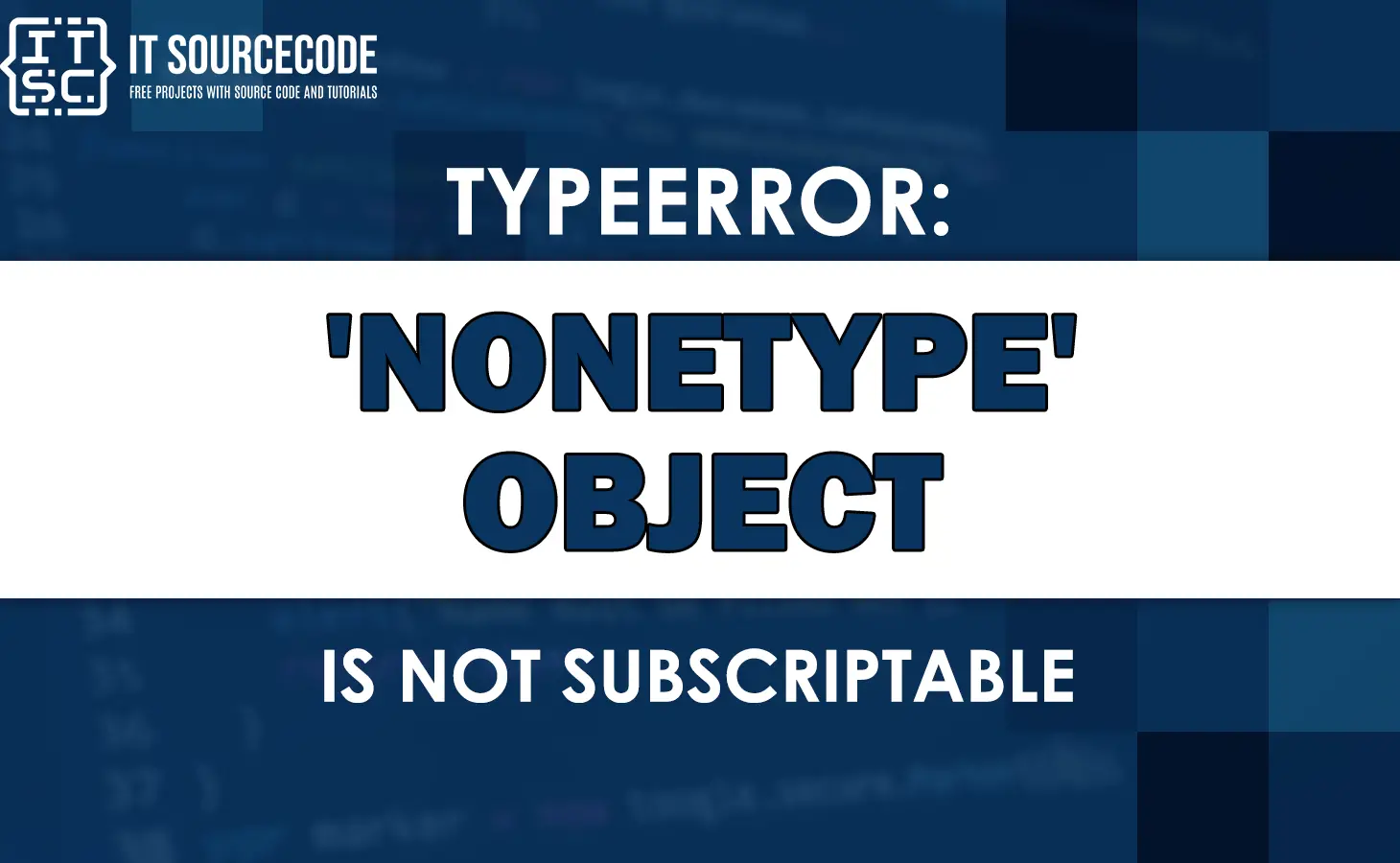In Python, running into errors like typeerror: ‘nonetype’ object is not subscriptable is unavoidable.
Knowing that errors are unavoidable, we should also be mindful that understanding them is the first step to fixing them.
In this article, we will provide you with information about this error.
Understand the error mentioned above before proceeding to the tutorial on how to fix it.
What is typeerror: ‘nonetype’ object is not subscriptable?
The typeerror: ‘nonetype’ object is not subscriptable is an error message that occurs in Python.
Attempting to use the operation “indexing” or “slicing” on a NoneType object is what triggers this error.
What is a NoneType object?
In Python, a NoneType object is a unique data type.
The absence of a value is what it represents.
When a function or method does not specifically give a value back, it is returned.
Most importantly, it does not support indexing and slicing operations.
Back to the issue, here is a sample code that triggers the error:
my_list = None
print(my_list[0])Error:
Traceback (most recent call last):
File "C:\Users\path\PyProjects\sProject\main.py", line 2, in <module>
print(s_list[0])
~~~~~~^^^
TypeError: 'NoneType' object is not subscriptableTypeerror: ‘nonetype’ object is not subscriptable – SOLUTION
Time needed: 2 minutes
To fix the typeerror: ‘nonetype’ object is not subscriptable you have to make sure that you are not indexing or slicing a NoneType object.
Here is the guide that you can get an idea of to fix your problem.
- Verify if the variable is None or not.
To verify, use the if statement.
Example code:
s_list = None
if s_list is not None:
print(s_list[0])
else:
print(“The sample list is None!”)
Output:
The sample list is None! - Make sure that the variable has an assigned value.
Example code:
s_list = [1, 2, 3, 4, 5, 6, 7, 8, 9]
print(s_list[0])
Output:
1 - Debug your code.
To debug your code and detect where the error is occurring, use the print statement.
Example code:
s_list = None
print(“Before : “, s_list)
s_list = [1, 2, 3, 4, 5, 6, 7, 8, 9]
print(“After : “, s_list[0])
Output:
Before : None
After : 1
Here is a sample code that solves the code above that triggers this error:
s_list = [1, 2, 3, 4, 5, 6, 7, 8, 9]
print(s_list[0])Output:
1Tips to avoid getting type errors
The following are some tips to avoid getting type errors in Python.
- Avoid using the built-in data types in Python in the wrong way.
- Always check or confirm the types of your variables.
- Be clear and concise when writing code.
- Handle the error by using try-except blocks.
- Use the built-in functions of Python if needed.
FAQs (Frequently Asked Questions)
To fix an object that is not subscriptable, you have to convert that object into an iterable data type.
For example, we are using an integer.
Since integer objects are not subscriptable, convert them into a string.
Here are some examples of subscriptable objects in Python:
✅ Dictionaries
✅ Lists
✅ Strings
✅ Tuples
Typeerror is an error in Python that arises when an operation or function is applied to a value of an improper type.
This error indicates that the data type of an object isn’t compatible with the operation or function being used.
Python is one of the most popular programming languages.
It is used for developing a wide range of applications.
In addition, Python is a high-level programming language that is used by most developers due to its flexibility.
Conclusion
In conclusion, the typeerror: ‘nonetype’ object is not subscriptable is an unavoidable error that occurs in Python.
You can solve this error by making sure that you are not indexing or slicing a NoneType object.
By following the guide above, you will surely solve this error quickly.
That is all for this tutorial, IT source coders!
We hope you have learned a lot from this. Have fun coding!
Thank you for reading! 😊

